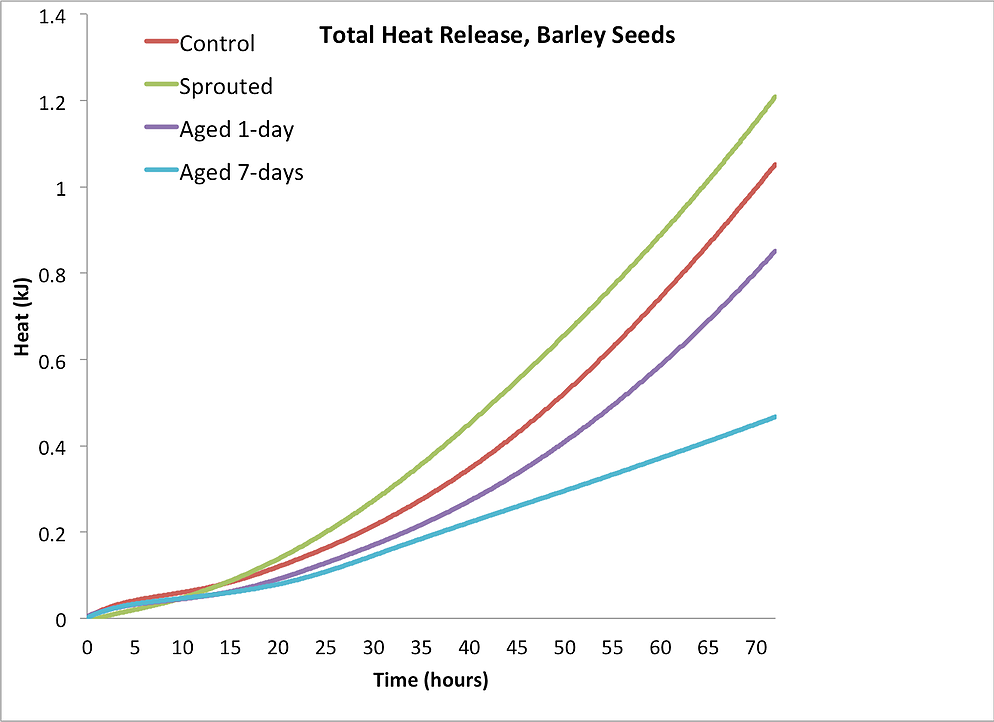Isothermal Calorimetry applied to Agricultural Sciences
Study seed germination, soil characterization, tree fungus, or crop diseases
Overview

Isothermal Calorimeters measure the thermal power released or absorbed by chemical and biological processes. Moreover, the continuous measurement of the heat released by the reaction provides an understanding both of the reaction rate of a phenomenon (thermal power) and the total progress (thermal energy) in a way that most traditional testing cannot achieve.
Calmetrix offers isothermal conduction calorimeters that are perfectly dimensioned for applications in Agricultural Science, with a choice of sample sizes from less then 1 ml up to 450 ml, which is much larger than any other isothermal calorimeters in the market. A larger sample size provides ideal conditions for studies related to seed germination, plant disease control or soil testing.
The following are common applications for isothermal calorimetry in Agri-Science:
-
Seed germination
Imbibition of seeds with water and the presence of oxygen allow germination to occur, resulting in a release of thermal power that can easily be measured with an isothermal calorimeter. Some examples of applications include:
-
characterization of different seeds by origin or crop
-
quality control or testing of aged or improperly stored seeds
-
sensitivity studies of growth rate by varying parameters such as temperature, moisture, pH, or the aplication of certain chemicals.
-
-
Soil studies
Isothermal calorimetry is an effective tool to measure biological activity in soils. Glucose amended samples are placed in the calorimeter and the measurement of thermal power is used to infer soil microbial efficiency.
-
Disease detection and control
The presence of small insects or microorganisms such as fungi or bacteria have an impact on plant growth and the overall quality of a crop. The metabolic activity of living organisms, whether aerobic or anaerobic, results in a release of heat that is easily measured in an isothermal calorimeter to conduct studies such as:-
effectiveness of bactericides, fungicides or pesticides
-
growth of organisms in crops under different temperature conditions
-
wood decay both in forests or in processed wood.
-
Example: seed germination studies


In this example, barley seeds were tested for the effect of sprouting and aging. Each sample contained 50 seeds. Seeds in the red curve (control) were tested as is, without any sprouting or aging. Seeds in the green curve were sprouted by imbibition with water before testing. Aging was simulated for seeds in the remaining two samples by heat drying for one day (purple curve) and seven days (blue curve).
The effects are clearly visible in the calorimetry curves. The thermal power show that the reaction rate, in this case an indicator of metabolic activity, is much higher for the sprouted seeds, especially in early stages up to 50 hours. Aged seeds show less rate of reaction at all stages, with the seeds aged for 7 days clearly lagging afer 30 hours. A visual assessment at the end of the experiment confirmed that the progress of germination in the seeds aged for 7 days was significanty less than for the other samples.
Where thermal power shows the rate of reaction, or reaction kinetics, of germination, thermal energy is an indicator of total advancement of the germination process. In the thermal energy curve above, one can clearly see that the sprouted seeds (green curve) perform significantly better, while aging is seen to have a visible negative impact on the germination process.
검색 결과 16건
- 분류 : 바이오열량계
